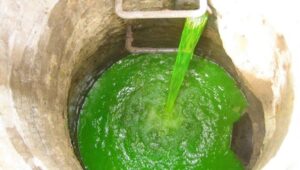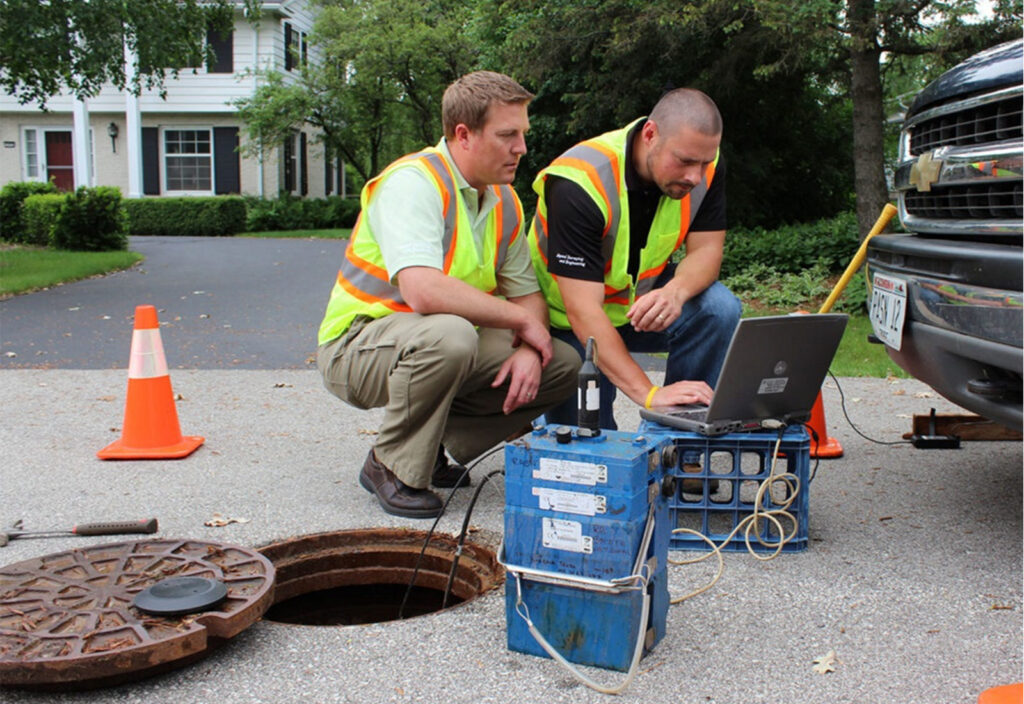raSmith assesses sewer infrastructure damage using tools such as advanced flow monitoring, manhole inspections, dye testing, smoke testing, and closed circuit television (CCTV) cameras.
For rehabilitation, raSmith develops customized programs that address inflow and infiltration issues, ehance both public and private collection systems, and leverages trenchless technologies to deliver cost-effective and sustainable solutions.
Sanitary Sewer Assessment Methods
- Multi-sensor inspection
- Dye testing
- Smoke testing
- Closed circuit television (CCTV) inspection
- Manhole inspections
- Hydraulic modeling
Sanitary Sewer Rehabilitation Methods
- Cured-in-place-pipe lining
- Pipe bursting
- Sliplining
- Chemical grouting
- Manhole lining
What is Sewage Rehabilitation?
Sanitary sewer systems are a critical component of modern urban infrastructure, responsible for transporting wastewater from homes, businesses, and industries to treatment facilities. Over time, these systems can deteriorate due to various factors such as corrosion, blockage, root intrusion, and general wear and tear. This degradation not only poses a risk to public health and the environment, but can also lead to significant economic losses. Therefore, the rehabilitation of sanitary sewer systems is of paramount importance.
Sanitary sewer rehabilitation refers to the process of repairing and upgrading existing sewer systems in a municipality to restore their functionality, improve performance, and extend their lifespan. The rehabilitation process may involve several techniques for addressing sewer and manhole issues, from completing minor targeted repairs to performing complete overhauls, all while minimizing disruption to the community and keeping the sewer infrastructure operational.
Common Causes of Sewer System Degradation
- Aging Infrastructure
- Older sewer pipes are more susceptible to wear and tear due to their age. Many of these systems were installed decades ago and may not meet today’s standards.
- Corrosion
- Chemical corrosion from aggressive waste materials, typically observed from hydrogen sulfide exposure or microbially induced.
- Ground Movement
- Shifting soil putting pressure on pipes, leading to cracks or misalignments.
- Poor Maintenance
- Infrequent cleaning and inspections can allow minor issues to escalate, leading to more severe problems.
- Blockage
- Accumulation of grease, oil, debris, and other non-biodegradable materials can obstruct flow, causing backups and pressure on pipes.
- Root Intrusion
- Tree and shrub roots seeking moisture can penetrate pipes, causing cracks, leaks, or total collapse.
- General Wear
- Deterioration over time from older pipe materials, erosion, corrosive soil conditions, sediment accumulation, temperature fluctuations, and chemical wear.
Understanding the Costs and Consequences of Sewer System Failures
The importance of sanitary sewer rehabilitation programs can be understood by examining the consequences of system failures. When sewer systems fail, untreated wastewater can overflow into streets, homes, and local water bodies, leading to public health hazards such as the spread of diseases. Moreover, pollutants from untreated wastewater can contaminate local ecosystems, harming wildlife and disrupting biodiversity.
Economically, the costs associated with sewer system failures are substantial. Businesses may suffer from operational disruptions, and municipalities may face hefty fines for environmental violations. The social costs are also considerable. Residents may experience decreased quality of life, and property values can decline.
Protect Your Future: The Smart Way to Upgrade Wastewater Infrastructure
 Sanitary sewer rehabilitation programs aim to proactively address these issues. By regularly inspecting and maintaining sewer lines, potential problems can be identified and rectified before they escalate into major failures. Rehabilitation techniques such as cured-in-place pipe lining, pipe bursting, and chemical grouting are employed to repair and strengthen existing sewer infrastructure. These methods are often more cost-effective and less disruptive than traditional excavation and replacement.
Sanitary sewer rehabilitation programs aim to proactively address these issues. By regularly inspecting and maintaining sewer lines, potential problems can be identified and rectified before they escalate into major failures. Rehabilitation techniques such as cured-in-place pipe lining, pipe bursting, and chemical grouting are employed to repair and strengthen existing sewer infrastructure. These methods are often more cost-effective and less disruptive than traditional excavation and replacement.
Furthermore, sanitary sewer rehabilitation programs contribute to the sustainability of sewer systems. By extending the life of existing infrastructure, the need for new construction is reduced, which in turn minimizes the environmental impact associated with raw material extraction and construction activities. Additionally, modern sewer rehabilitation techniques can improve the efficiency of sewer systems, leading to reduced energy consumption at treatment facilities.
Public awareness and support are crucial for the success of sanitary sewer rehabilitation programs. Educating the community about the importance of these programs can lead to increased funding and political backing. Residents can also contribute by properly disposing of waste and reducing the amount of grease and other materials that can clog sewer lines.
Sewer Rehabilitation Techniques
raSmith has published a blog titled “Revolutionizing Sewer Rehabilitation: The Power of Flow Monitoring Innovations.” This insightful article delves into the application of advanced sensor technology to identify areas contributing to inflow and infiltration (I/I) issues within sewer systems. It offers a comprehensive examination of how these sophisticated flow monitoring tools are revolutionizing the analysis of sewer systems. By pinpointing and ranking areas affected by high levels of I/I, these devices facilitate more effective funding distribution and system rehabilitation efforts for municipalities.
 In conclusion, the strategic evaluation and rehabilitation of sanitary sewer systems stands as a cornerstone in safeguarding public health, conserving environmental integrity, and bolstering economic resilience. Engaging with raSmith’s municipal and wastewater experts brings a wealth of innovative solutions and dedicated support to your project. Our depth of experience in sanitary sewer evaluation and rehabilitation will help ensure your community benefits from a robust and sustainable infrastructure. By prioritizing these essential programs, municipalities and utility providers can secure a legacy of safety, cleanliness, and efficiency for future generations. Contact raSmith to discuss your water and sewer project needs.
In conclusion, the strategic evaluation and rehabilitation of sanitary sewer systems stands as a cornerstone in safeguarding public health, conserving environmental integrity, and bolstering economic resilience. Engaging with raSmith’s municipal and wastewater experts brings a wealth of innovative solutions and dedicated support to your project. Our depth of experience in sanitary sewer evaluation and rehabilitation will help ensure your community benefits from a robust and sustainable infrastructure. By prioritizing these essential programs, municipalities and utility providers can secure a legacy of safety, cleanliness, and efficiency for future generations. Contact raSmith to discuss your water and sewer project needs.
